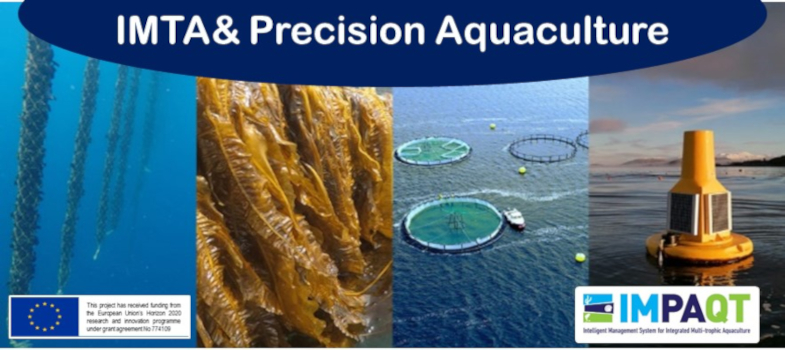Extractive species
Extractive species
This resource will provide you with an overview for the use of some extractive species in an IMTA scenario. The species discussed are primarily lower trophic species. They are referred to as extractive species, as they remove particulate matter from the environment and metabolise it into biomass that can be used for a range of applications on land such as food, feed or biomaterials.
Their role in IMTA scenarios can be as follows:
- A circular system - the extractive species utilise the waste from the fed species as well as any excess nutrients that enter the marine ecosystem from the land.
- Environmental benefits – the utilisation of waste which would previously have entered the environment is now remediated by the extractive species.
- More resilient ecosystem that may prevent disease, pests and parasite load for the system as a whole.
- Additional biomass and economic products from a farm.
- More optimised use of licenced aquaculture space.
Studies have shown that there are clear benefits to integrating bivalves and macroalgae with fish farms. Bivalves grown within, and relatively near, fish cages (0m and 1–60 m distance categories, respectively) have shown significantly higher biomass production relative to controls compared to those grown at larger spatial scales (61+ m). However, biomass production of macroalgae was significantly higher than controls only within close proximity to fish cages (0 m).
This information shows increased extractive species production is generally greatest at relatively small spatial scales. It also highlights the need for more site‐specific information (e.g. seawater parameters, hydrodynamics, food supply, farm capacity) in future studies. The allocation of control sites and locating these at suitable distances (1–8 km) from fish farm effluent sources to avoid fish farm nutrient contamination are also recommended.
Studies in Canada show that sea cucumber, Cucumaria frondosa, have a great deal of potential to become an effective organic extractive IMTA species and aid in the reduction of organic loading occurring at aquaculture sites [ https://onlinelibrary.wiley.com/doi/abs/10.1111/raq.12186].
A meta‐analysis of integrated multitrophic aquaculture: extractive species growth is most successful within close proximity to open‐water fish farms. 2016, Daniel Kerrigan Coleen C. Suckling. https://doi.org/10.1111/raq.12186 Reviews in Aquaculture
Investigations into the bioremediation potential of seaweed species showed that the 5 species studied can effectively remove enriched nitrogen and phosphorous from fish tank effluent and are suitable for integrated aquaculture and bioremediation. They describe the differences between the species’ effectiveness and highlight the importance of selecting the correct species for optimal fish-seaweed integration.[https://onlinelibrary.wiley.com/doi/epdf/10.1111/raq.12478 ].
In the next sections, we will introduce these species and their biological and economic situations. The species consider to date are:
- Seaweed
- Oysters
- Mussels
- Scallops
- Lobster
